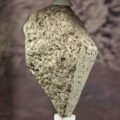Researchers have developed a new plasma thruster design that they say can open the door to longer range missions within our solar system as well as deep space. The new design improves on previous models by increasing thrust and efficiency, while also reducing “burping” in the plasma stream which has plagued previous Hall Effect based thrusters since their inception.
BACKGROUND: PLASMA THRUSTERS CURRENTLY FACE LIMITATIONS
Satellites, humans and rovers alike are still launched into space using chemical propellants. Unfortunately, this type of propulsion has its limits, especially for missions beyond the moon or Mars. Novel methods like solar sails, plasma magnets and even warp drives have been proposed to help humanity explore the cosmos, but most are still theoretical in nature.
Plasma propulsion is increasingly a viable alternative and has already been put to use in demonstrator missions. The most common type is the Hall Effect thruster, which uses the power of plasma to drive satellites and robotic missions to places chemical rockets can only dream of. Unfortunately, these propulsion systems have their flaws as well, which have thus far limited their wider application.
Now, a team from the Department of Energy’s (DOE) Princeton Plasma Physics Laboratory (PPPL) have tackled those issues head on, offering mission planners a new tool for exploring beyond our solar system’s local neighborhood.
ANALYSIS: NEW DESIGN SOLVES OLD PROBLEMS
According to the press release announcing the new thruster design, their model “eliminates the walls around the plasma propellant to create innovative thruster configurations.”
This innovation, the release explains, helps to “reduce channel erosion caused by plasma-wall interactions that limit the thruster lifetime – a key problem for conventional annular, or ring-shaped, Hall thrusters and especially for miniaturized low-power thrusters for applications on small satellites.”
Unfortunately, eliminating the walls in a plasma thruster also causes the thrust plume to spread out, reducing its efficiency.
“In short, wall-less Hall thrusters, while promising, have an unfocused plume because of the lack of channel walls,” said Jacob Simmonds, a graduate student in the Princeton University Department of Mechanical and Aerospace Engineering. “So, we needed to figure out a way to focus the plume to increase the thrust and efficiency and make it a better overall thruster for spacecraft.”
With results published in the journal Applied Physics Letters, the team accomplished this goal by adding another design upgrade, a segmented electrical diode. Surprisingly, along with completely solving the plume focus issue, their new design solved another problem known as breathing oscillations, or more simply, “hiccups,” that has haunted previous Hall thrusters.
“This innovation not only reduces the divergence and helps to intensify the rocket thrust,” said PPPL physicist Yevgeny Raitses in the same release, “but also, suppresses the hiccups of small-size Hall thruster plasmas that interrupt the smooth delivery of power.”
OUTLOOK: PLASMA THURSTERS FOR CUBE SATS & DEEP SPACE EXPLORATION
The researchers behind the new design note that the actual physics that govern their improvements still need more research to be completely understood. But the benefits of reduced erosion, higher thrust, increased efficiency and the elimination of hiccups are real and measurable.
Moving forward, the team says their design can be particularly useful in two areas. The first is tiny cube satellites, or cube sats, that have suffered from hiccups more than larger systems. The second is deep space missions, where a hyper-efficient system like this can help propel humanity deeper into the cosmos.
“In the last two years we have published three papers on new physics of plasma thrusters that led to the dynamic thruster described in this one,” said Raitses. “It describes a novel effect that promises new developments in this field.”
Follow and connect with author Christopher Plain on Twitter: @plain_fiction
